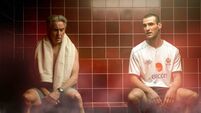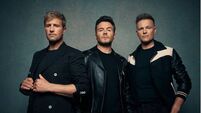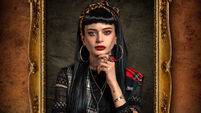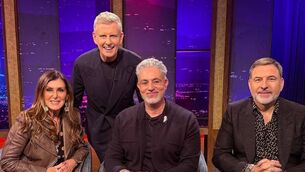'It was considered the women’s duty to nurture the calves': Áine Ryan on art and farming
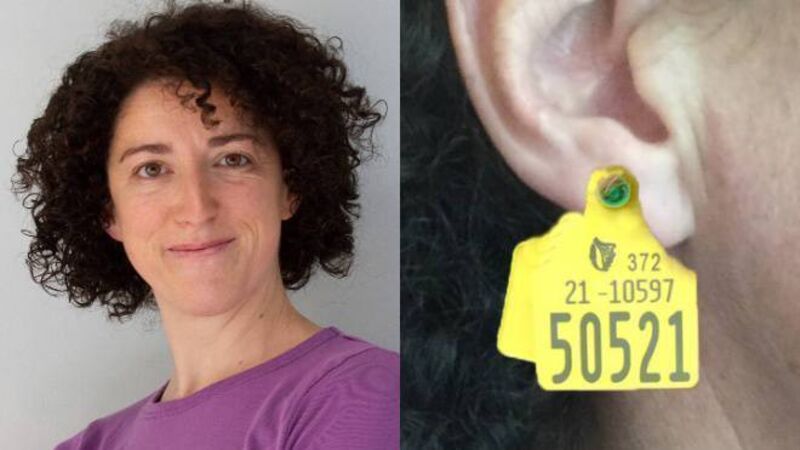
Áine Ryan (left) and her Part of the Herd photograph that features in the exhibition in Killorglin.
Growing up on the family farm in West Waterford, Áine Ryan never imagined that the experience would one day inform her practice as an artist. However, the subject of farmwork, and particularly the role of women in agriculture, is the major inspiration behind her work in Beirt na Chéile, her joint exhibition with Bernadette Cotter currently showing at the Grilse Gallery in Killorglin, Co Kerry.
“When I was a teenager,” says Ryan, “my mother worked three or four jobs. She’d leave the house at half five in the morning, and wouldn’t get home till half six or seven. And then she’d have to spend the evening filling in forms for things like Area Aid. She’d often do the forms for our neighbours as well. She was expected to be everywhere, milking the cows and looking after the calves. It was considered the women’s duty to nurture the calves, and keep them alive.”
The impression her mother’s schedule made on Ryan is clearly evident in her work. Her pieces in Beirt na Chéile include Part of the Herd, a photograph of an ear tag for cattle attached to her own ear; a sculpture called For the Use of the World, comprised of a calving jack and a pair of women’s knickers; and Docility Chart, an information leaflet based on those used to categorise the temperament of cattle on farms.
“They can be described as everything from docile to restless, nervous, flighty or aggressive,” she says. “I’ve messed around with it a bit. Instead of cattle, the leaflet streamlines a methodology for categorising women.”
In her youth, Ryan was more interested in travel than farmwork. It wasn’t until she was diagnosed with Hodgkin’s lymphoma in 2010 that she moved home. Later, as she underwent treatment, she began to look at studying art, an interest that led to her attending the Crawford College of Art & Design in Cork. Even as she worked on her graduation show in 2021, she went back and forth all the time, to help with the cows calving and other chores around the farm.
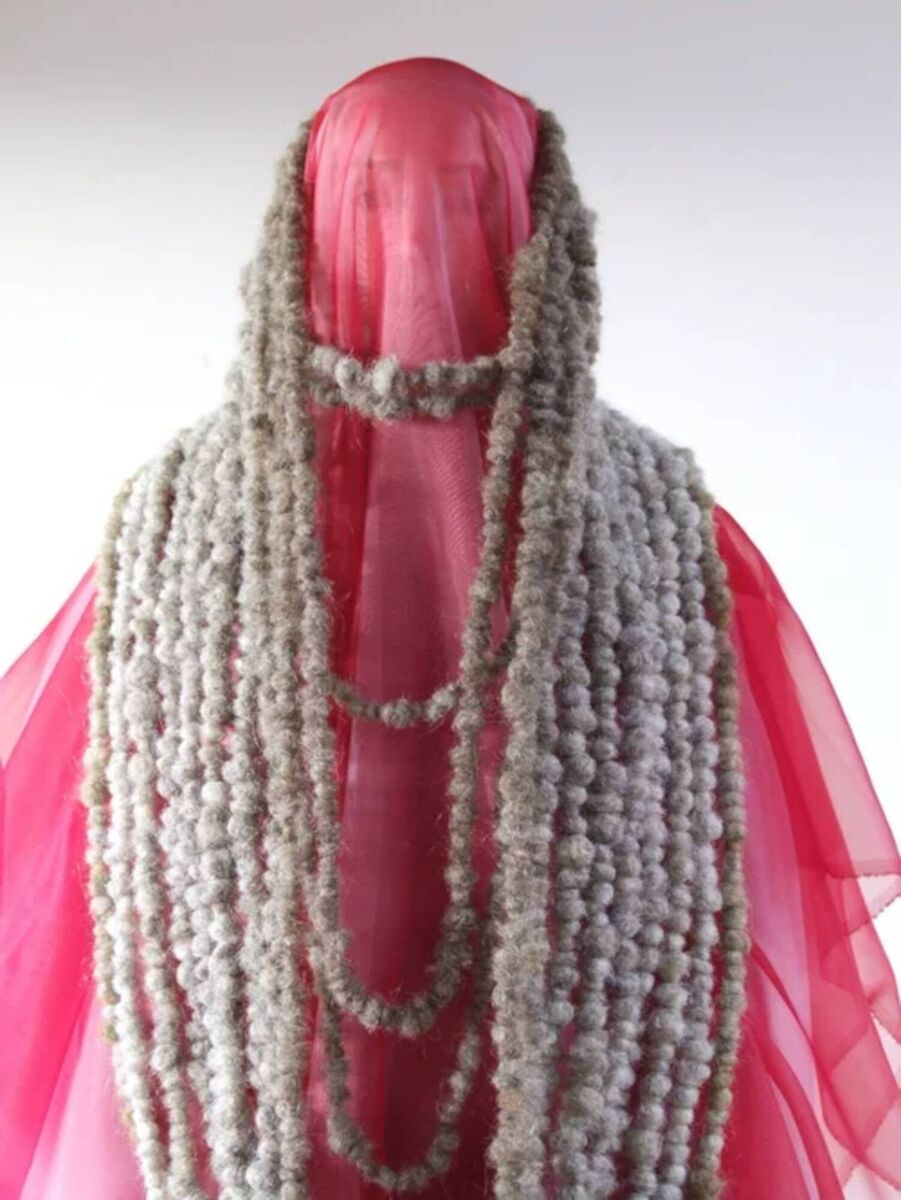
After college, she secured work at the Adriano Berengo glass studio in Venice, Italy. “Adriano casts for some of the top artists in the world. When I was there, I was working on waxes for editions of Ai Weiwei’s sculptures. But I only stayed four months. The same week I flew out to Venice, I was awarded the Basic Income for Artists, and I decided to come home and use that to focus on my own work.”
The Basic Income, introduced in 2022, provides 2,000 artists with a weekly payment of €325 for three years. Ryan, like so many other recipients, cannot praise it enough.
“I don’t know if I would even be making art without it, to be honest,” she says. “For instance, it meant that I could do a non-funded residency in the UK for three weeks. And doing that residency meant I could produce the work that helped secure me an RDS Craft Award late last year. And that in turn allowed me to convert a cow parlour on our farm, which I now use as my studio.”
The parlour had gone unused since her parents retired a few years ago; their land is now leased to a neighbour for grazing. “I only moved in over the summer, in July. But it’s brilliant. It’s not just having a space to work in; I can have curators visit. It adds professionalism to my practice.” Over the past four years, Ryan has shown regularly, in exhibitions at the Royal Hibernian Academy in Dublin, KFest in Killorglin, and the LOOP Festival in Barcelona, among many others.
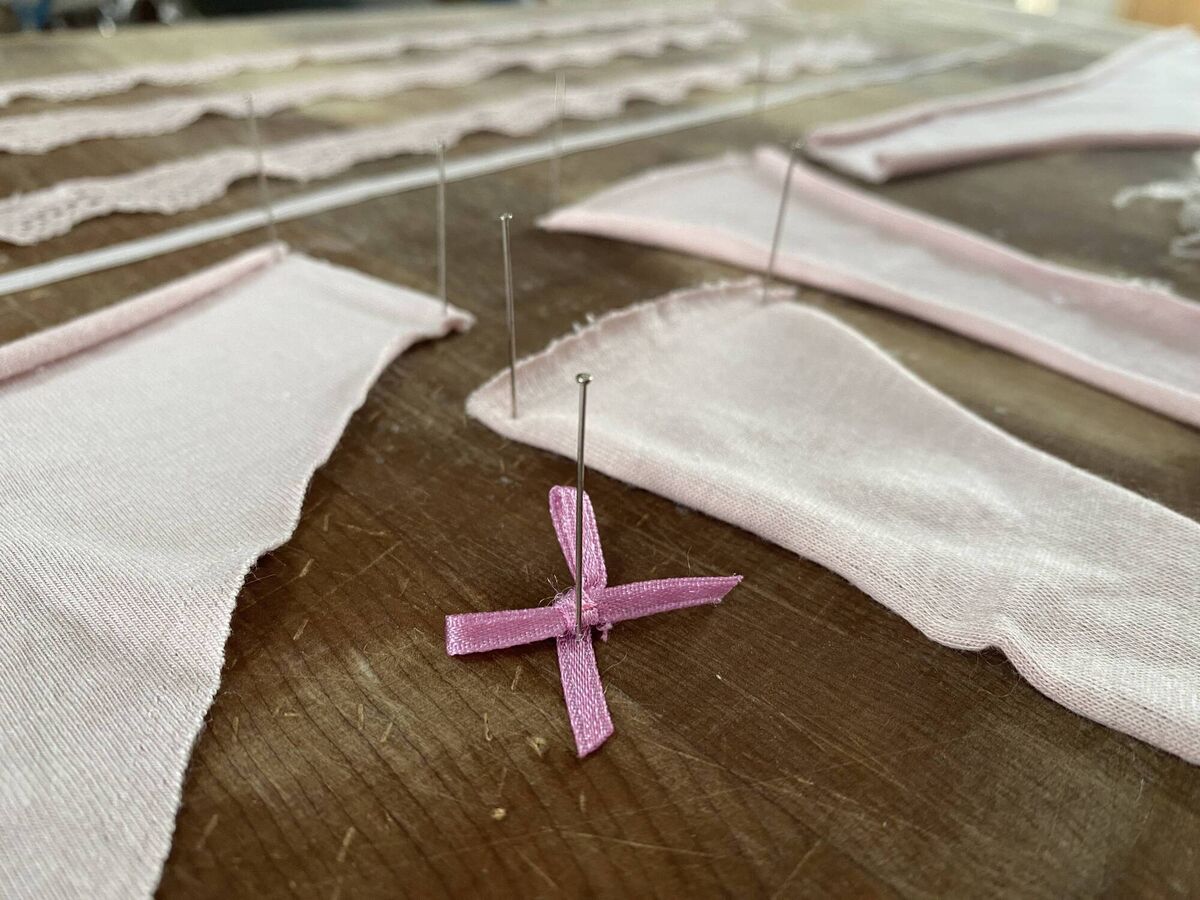
One of the issues she explores, in recent work such as Barren Is Never Used For Men, is the idea of fertility. “I’ve got the all-clear now,” she says. “But when I first began treatment for cancer, I was asked if I’d like to freeze my eggs. I’d never planned on having children, so I said, no, that’s okay. But then, about five years later, I started getting sweats. It turned out that, because of the treatment, I was starting to become perimenopausal. That hit me like a ton of bricks. Like I say, I never wanted to have children, but once the option is gone, you’re like, balls.
“I was speaking to someone recently who told me that when she went through menopause she felt useless. And I was like, I can empathise with that. That’s why the idea of the calving jack is so important in my work. I’ve been part of the conversation when a cow ‘turns up’ or doesn’t calve, and is sent off to the mart asap. After my treatment, with a whole different pair of eyes, I’d be asking myself, should I be going to the mart as well? Even though I know your worth is not connected to just how fertile you are or whether your womb works or not, the perception is there. It’s like that whole trad wife trend in America… your success is judged by how many kids you can give your husband.”
Some of the new work Ryan is preparing for a solo exhibition in Waterford next year will make use of a cow’s head and hide she was given by her aunt. Preparing these materials was, she says, something of a challenge. “I had to go on YouTube to find out how to tan a hide. I had it stretched out fully on the ground, and I was sitting there, cutting bits of meat off the back of it with a knife. The idea is that I’ll stick thorns through it, which has to do with how nature protects itself with things that prick and sting.”
Preparing the cow’s head was another matter. “I had to boil it, to get the flesh off. I didn’t vomit, but it certainly turned my stomach.”
That experience, and a conversation with the artist Dorothy Cross, who often uses parts of animal bodies in her work, has helped her convert to vegetarianism. “I met Dorothy at the MAKE conference in Cork in the spring. When I asked if she ate meat, she said, 'How could I? How could anyone?'”
Cross and the Tipperary artist Alice Maher have been two of Ryan’s biggest influences. “They were the first artists I knew of who used natural materials in their work,” she says. “I remember listening to an interview with Alice, where she said, the rural is not lesser. It gave me enough of a push to go, yeah, your background in farming - and what you’re saying about it - is perfectly valid.”
- runs at the Grilse Gallery in Killorglin, Co Kerry until November 23
- Further information: grilse.ie

